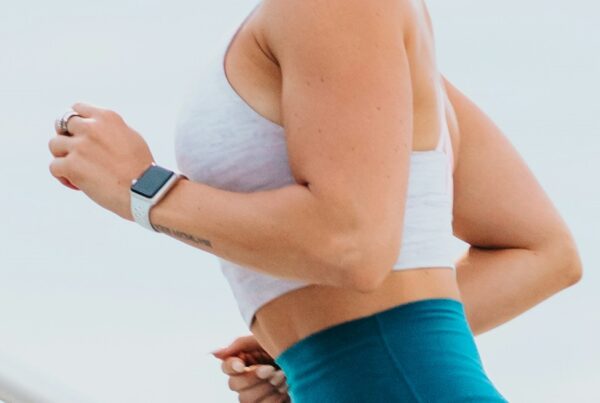Tender hip flexors can put a dent in your game. Feeling a sudden sharp pain in the front of your hips or tenderness around your upper thigh? A strain like this is more common than you’d think. Athletes who participate in sports like martial arts, dancing, power yoga, and running are especially prone to straining these muscles.
If you’ve been working your body a lot recently or have picked up a new sport with a lot of leg kicks and extensions. And you’re now experiencing tender muscles or pain in your hips and legs. Then you’ve most likely strained your hip flexor by overstretching or hyperextending.
Most strains have different levels of severity. Luckily, in most cases, minor injuries can be treated at home with rest and lots of heat or ice packs. Sometimes, keeping fit does come at a cost.
What Are Hip Flexors, And How Can You Strain Them?
Your hip flexors connect the top of the femur, which is the largest bone in the body, to the lower back, hips, and groin. They are a group of muscles that, as the name implies, flexes the hip (brings the thigh closer to your body). They include the iliacus muscle and psoas muscle, collectively known as the iliopsoas. The rectus femoris – a part of your quads, the sartorius muscle – the longest muscle in your body, and a few other muscles located near your upper leg.
I was curious to explore the hip flexors in greater detail, because I too, began to experience pain and tenderness around that area after overextending myself during a kickboxing class. ![tender [longevity live]](https://longevitylive.com/wp-content/uploads/2018/09/coach-dance-dancing-12312-320x213.jpg) Interestingly, it’s more common in athletes than I had thought. According to experts, an injury to the hip flexor often occurs due to poor technique in sport or an acute event like slipping, tripping, or falling. In addition, hip flexor injuries are especially common with athletes who participate in sports that involve a lot of hip action. It is thought in sports medicine that hip flexor injuries are directly related to hamstring strains. However, the main one seems to be kicking or lifting your leg higher than you normally would. Particularly if you forcefully kick an object, overextend the leg, or pivot. It could also happen by overstretching through certain poses like a high warrior lunge in yoga.
Interestingly, it’s more common in athletes than I had thought. According to experts, an injury to the hip flexor often occurs due to poor technique in sport or an acute event like slipping, tripping, or falling. In addition, hip flexor injuries are especially common with athletes who participate in sports that involve a lot of hip action. It is thought in sports medicine that hip flexor injuries are directly related to hamstring strains. However, the main one seems to be kicking or lifting your leg higher than you normally would. Particularly if you forcefully kick an object, overextend the leg, or pivot. It could also happen by overstretching through certain poses like a high warrior lunge in yoga.
Usually, a person may be more at risk for injuring their hip flexor if he or she has tightness in those muscles. A lot of the time, it’s caused by our industrialized, chair-sitting, sedentary lifestyles.
Not all tender hip flexor strains are the same, some being worse than others. Your injuries can range from small microscopic tears and inflammation in the muscle fibers to significant tears.
Your hip flexors consist of various muscles that all work together to allow a person to be mobile. That is why it is important to stretch and cool down probably after high-intensity exercise, to avoid becoming tight in your hips which will reduce your mobility.
How Do You Know That You’ve Strained Your Hip Flexors?
It all depends on the exact nature and location of your pain. You might have only strained one part of your hip flexor, and therefore it will only be painful around those specific muscles. However, there are a few common symptoms that most people with a strained hip flexor will experience. Some of which include:
- Sudden, sharp pain at the front of your hip or pelvis straight after the movement or event.
- You’ll feel a cramping or clenching sensation in the muscles of the upper leg area.
![tender [longevity live]](data:image/svg+xml;base64,PHN2ZyB3aWR0aD0iMSIgaGVpZ2h0PSIxIiB4bWxucz0iaHR0cDovL3d3dy53My5vcmcvMjAwMC9zdmciPjwvc3ZnPg==)
- A very good indicator is feeling tender and sore in the upper leg.
- Loss of strength in the front of the groin accompanied by a tugging sensation.
- Frequent muscle spasms in the hips or thighs.
- Inability to continue kicking, jumping, or sprinting.
- Reduced mobility and discomfort when moving, including limping.
- Pain and discomfort in the upper leg area, which feels constant.
- Swelling or bruising around the hip or thigh area.
- Tightness or stiffness after being stationary, particularly after sleeping.
Exercise Your Hip Flexors
Now obviously if you’re already in pain, this advice might not be what you need right now. However, for those looking for ways to prevent this kind of injury. You’ll find this advice very helpful. There are certain exercises you can do regularly to help keep you supple and flexible which will prevent injury.![tender [longevity live]](https://longevitylive.com/wp-content/uploads/2018/09/yoga-2959226_640-320x213.jpg)
If you’re somebody who has a job where you sit down most of the day. So you might want to take heed. This degree of inactivity can result in tight hip flexors, causing lower back pain, hip pain, strain, and damage to the area. Hip exercises can help to strengthen the tender hip flexor muscles and these exercises can be done at home. These are very gentle stretches and help reduce tension, which can prevent further or future injuries.
If you’re a runner or like jumping around then change up your routine for a few weeks and try a bit of gentle swimming or cycling instead. This can be beneficial to improving your strength and preventing hip flexor strain. More importantly, you MUST warm up muscles before exercising. This will help ensure they are ready to be stretched and will prevent further straining.
Alternatively, you can apply heat to the area and go for a gentle walk for a few minutes to warm up before exercising or stretching.
Stretches To Ease Tender Hip Flexors
Your goal after straining your hip flexors is to reduce tightness, increase flexibility, and strengthen muscles. That way you’ll help ease the existing pain and avoid future injuries.
1. Seated Butterfly Stretch
Sit up straight on the floor and place the soles of your feet together. Now, let the knees bend outwards. The heels should be pulled gently inwards, and the knees dropped further towards the floor. Hold the stretch for 10 to 30 seconds.
2. Pigeon Pose![tender [longevity live]](https://longevitylive.com/wp-content/uploads/2018/09/yoga-3053488_640-320x213.jpg)
Start in a high plank position. Now begin to bring your left leg forward, so the knee is on the ground by the left hand. The right leg then slides back as far as possible. Hold the position and then swap sides.
3. Bridge Pose
Begin by lying on your back. Now you need to bend your knees and feet on the floor. Take a deep breath before raising the hips off the floor while squeezing the glutes. Hold for a moment, gently lower, and repeat.
4. Lunges
Start this exercise by standing straight with your feet together. Then take a step forward with your right foot, bend the knee and transfer the weight onto that leg before lowering your hips to the floor. Now, hold the position. This should then be repeated on the other side.
5. Wall Psoas Hold
To do this stretch you need to start in a standing position then bend your right knee. Slowly lift the upper part of the leg towards the ceiling and balance on the other foot. Then try to hold for 30 seconds before switching sides.
6. Skater Squats![tender [longevity live]](https://longevitylive.com/wp-content/uploads/2018/09/yoga-3053487_640-320x230.jpg)
Place your legs together and bend your knees while keeping your back straight and chest up. Once in a squat position, begin lifting each leg off the ground one at a time, stretching it out and pointing the toes. Do this while transferring the weight to the other.
7. Straight Leg Raises
Lie on your back with your palms on either side. Start to pull up the left leg and bend at your knee while keeping your foot on the floor. The right leg is then extended up towards the ceiling, without bending the knee. Hold the stretch for a few seconds and then switch sides.
8. Hip Flexion
Start by lying flat on your back with both legs straight. Now slowly pull the knee of your right leg towards your chest, as close as possible, without straining. After slowly lowering the leg, the same is repeated on the opposite side.
Give these exercises a go if you’re experiencing any pain or tender muscles. If the strain does not ease after ten days, then you might need to visit a doctor. However, stretching at home regularly, using a heat or ice pack, rest and anti-inflammatory pills should do the trick.
Want to know more?
Budokon Yoga was the only workout that helped American actress Jennifer Aniston overcome her split with Brad Pitt. Find out why you need to give this hybrid a try.



![tender [longevity live]](https://longevitylive.com/wp-content/uploads/2018/09/kickboxer-1561793_640-320x180.jpg)
![women [longevity live]](https://longevitylive.com/wp-content/uploads/2020/01/photo-of-women-walking-down-the-street-1116984-100x100.jpg)









